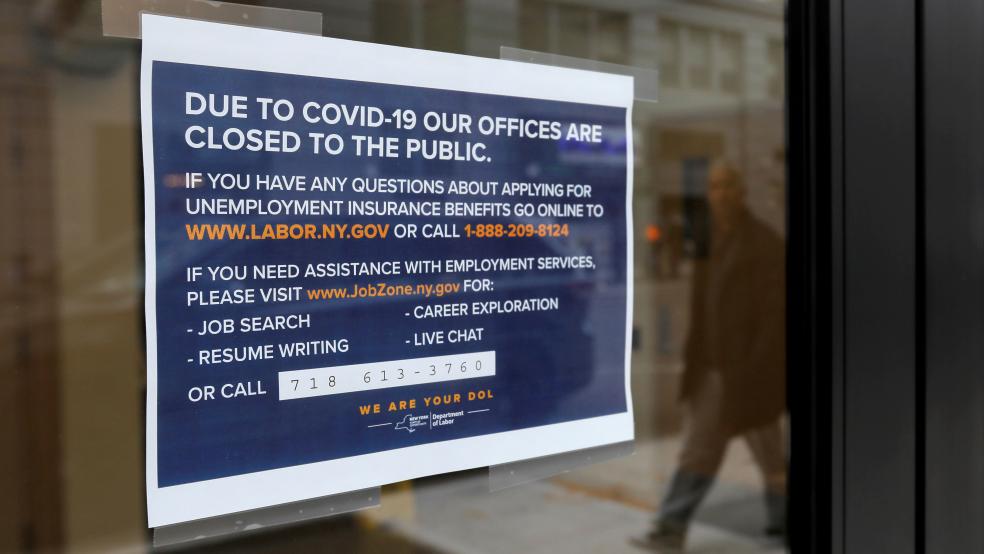More than 6.6 million Americans applied for unemployment benefits last week as the coronavirus pandemic ground the economy to a halt, a staggering number that’s nearly double the record set the week before, which itself obliterated the previous high from 1982. The federal government first began tracking new unemployment claims in 1967.
In all, some 10 million Americans lost their jobs and applied for government aid over the final weeks of March, according to Labor Department data released Thursday. “The past two weeks have erased nearly all the jobs created in the past five years, a sign of how rapid, deep and painful the economic shutdown has been on many American families who are struggling to pay rent and health insurance costs in the midst of a pandemic,” The Washington Post’s Heather Long reports.
The numbers are also a sign of just how vital a lifeline the expanded unemployment benefits included in the newly enacted $2.2 trillion coronavirus relief bill will be — and a clear indication that more help will be needed.
“Given the extraordinary deterioration of the labor market in a matter of weeks, federal policymakers will absolutely need to come back and provide more desperately needed relief, and more support for the recovery once the lockdown is over,” economist Heidi Shierholz of the left-leaning Economic Policy Institute tweeted. Other EPI economists estimate that 3.5 million workers may have lost their employer-provided health insurance over the last two weeks.
The real number of lost jobs is probably even higher: Economists warn that the new data, as grim as it is, probably doesn’t capture the full number of Americans who have lost their jobs since many of those newly unemployed have yet to file a claim and many state unemployment offices are struggling to keep up with the surge of new filings. Also, gig workers and those who are self-employed weren’t eligible for unemployment benefits until the coronavirus relief bill was signed into law at the end of last week.
Economists at Goldman Sachs this week said they expect new claims to remain high throughout April, especially as businesses and workers learn more about the expanded unemployment insurance benefits provided in that relief bill, including $600 a week more on top of the usual state benefits. They projected that the surge of new claims would total nearly 18 million by the end of this month.
More generally, economists say that the unemployment rate, which recently hit a 50-year low of 3.5%, has likely surged to around 10% or higher. “With another week of huge job losses now underway we'd guess that the true unemployment rate right now is about 12.5%,” Ian Shepherdson, chief economist at Pantheon Macroeconomics, wrote to clients. “It will rise above that level, though, as job losses appear to be continuing at an astonishingly rapid pace.”
During the Great Recession, the unemployment rate peaked at 10% for one month, October 2009.
Shepherdson and other economists say that the total number of layoffs in the coming months could climb as high as 20 million, resulting in an unemployment rate as high as 16%.
“We’ve never seen anything like this,” said Aaron Sojourner, a labor economist at the University of Minnesota, told the Post. “The scale of the job losses in the past two weeks is on par with what we saw in two years during the Great Recession.”





